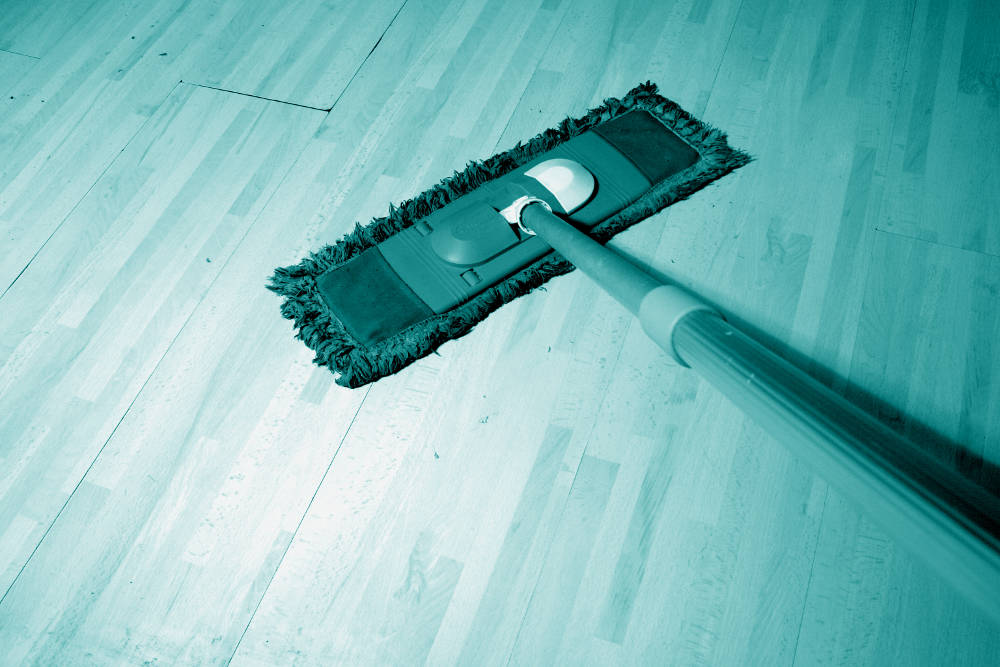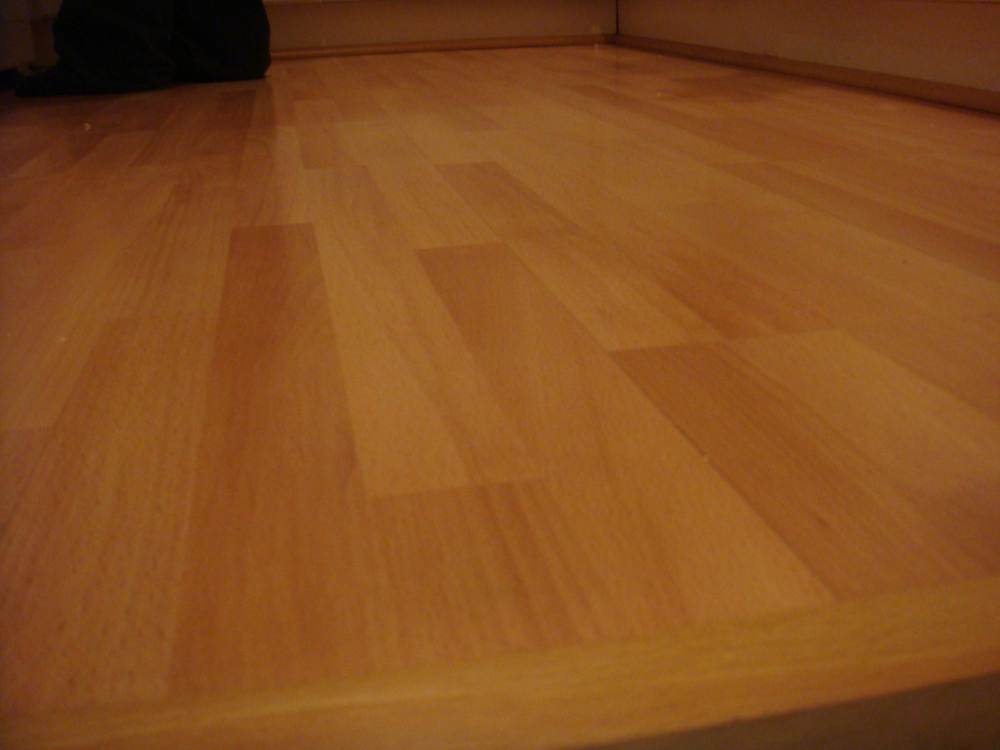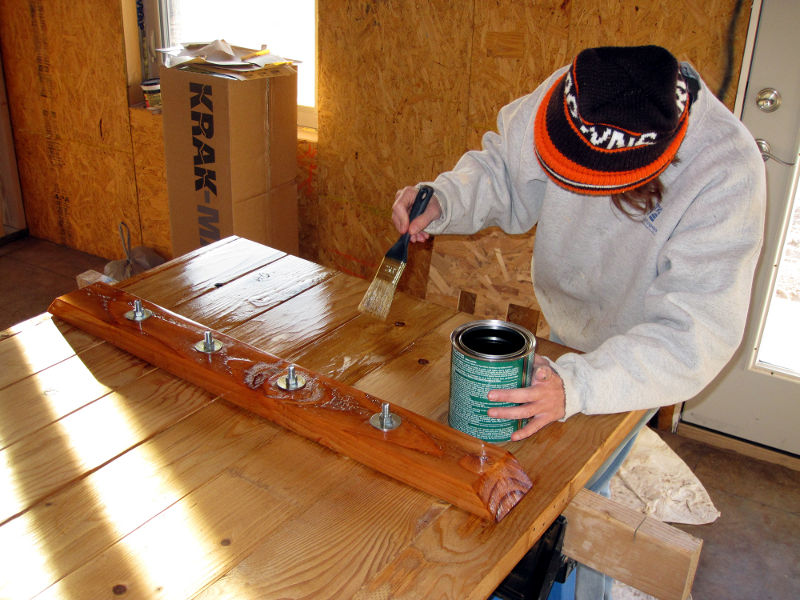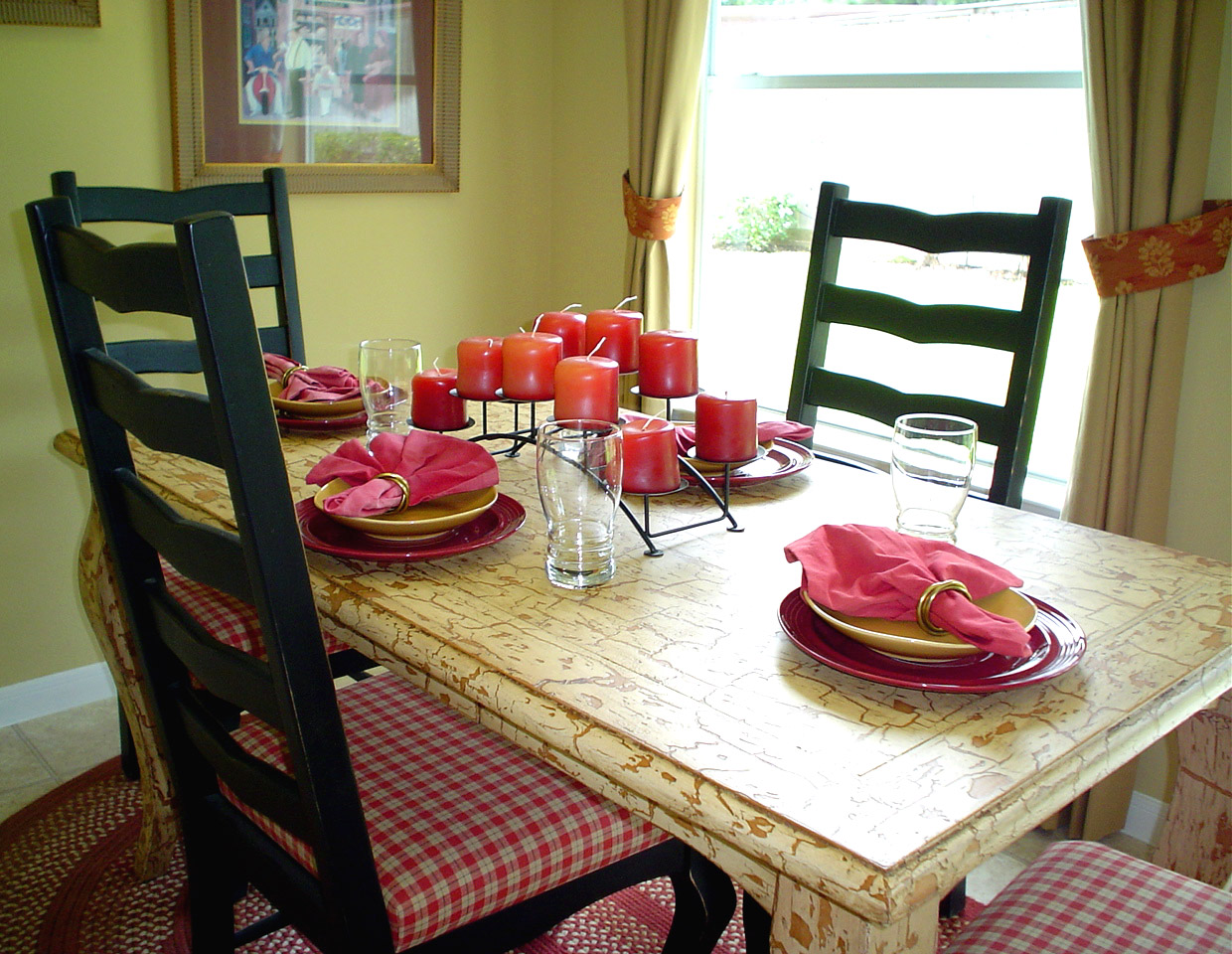Sanding is a common refinishing task that just isn’t very practical when refinishing hardwood floors. It’s tedious and will create a lot of dust. Fortunately, you can refinish hardwood floors without sanding by buffing or mopping first instead.
Method 1: Buffing
Step 1: Clean the floor thoroughly: Sweep and vacuum up all the dirt and make sure loose pieces of resin are peeled off. Once there are no loose particles or dirt anymore, use a wet cloth to wipe the floor and then let it dry. If the floor is covered with carpet, remove the carpet and use a scraper and a solvent to remove the glue and tacking strips. You can try using peanut butter to remove the glue, but Goo Gone® works better. Goo Gone® can damage your floors though, so only use a little bit and remember to test on a small area first!
Step 2:Repair holes: Use wood filler or putty to fill large holes (Learn the differences between Wood Putty vs Wood Filler). Stain over the putty or filler and let dry.
Step 3: Buff the floor: You can rent a buffing machine at your local hardware store or buy one online. This hand-held machine has a big rotating abrasive pad that is much finer than sandpaper. However, because of its size, it may be difficult to buff small spaces. Use sandpaper with a very fine grade to buff hard to reach places.
Step 4: Clean the surface: Use a cloth rag with mineral spirits or a light solvent to clean the whole area. Learn about mineral spirits.
Step 5: Apply new resin: Use a squeegee sponge mop to apply a new coat of resin. Only one layer is needed because the floor already has a finish. Let cure for around 12 hours before using the area.
Method 2: Mopping
Step 1: Clean the floor thoroughly: Sweep and vacuum up all the dirt and make sure loose pieces of resin are peeled off. Once there are no loose particles or dirt anymore, use a wet cloth to wipe the landing and then let dry. If the floor is covered with carpet, remove the carpet and use a scraper and a solvent to remove the glue and tacking strips that were used to attach the carpet to the floor.
Step 2: Create mixture: Thoroughly mix cold water and floor stripper according to the directions in the bottle. Citri-Strip Paint and Varnish Stripping Gel is a good floor stripper.
Step 3: Mop: Use a mop to apply the mixture to the floor. Let sit according to the waiting time on the bottle.
Step 4: Strip: Attach a stripping pad to a floor machine and move the machine across the floor; going with the grain of the wood. Do this until the top layer of the floor is removed. Use a wet-dry vacuum to get rid of the stripper.
Step 5: Clean with water: Use a mop and clean water to remove the chemicals from the wood and a wet-dry vacuum to clear the water up. Let dry overnight.
Step 6: Finish: Mop a thin coat of finish onto the floor. Let dry. You can apply more than one coat as long as you let the finish completely dry between each coat. Pro Shot’s® Floor Re-newing mixture is highly recommended.
If buffing and mopping are still too tedious for you, you can try a chemical sanding system instead. Each package may have different directions, but usually all you have to do is to apply the solvent and primer and then finish it with a clear coat. This type of refinishing is only ideal for small areas.
In order to maintain your hardwood floor’s character and shine, it is important to refinish at least once every 5 years. You can refinish with or without sanding, but I’d recommended calling a professional for a sanding project. Both methods will give fantastic results though. There are many ways to refinish hardwood floors without sanding but those listed above are some of the easiest and most effective.



